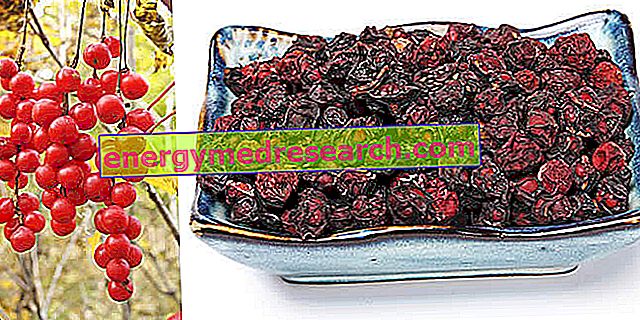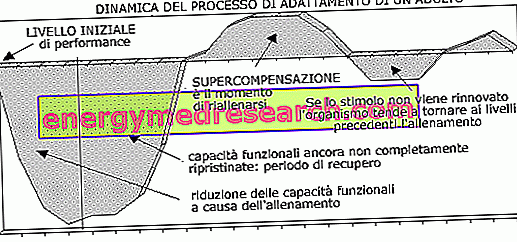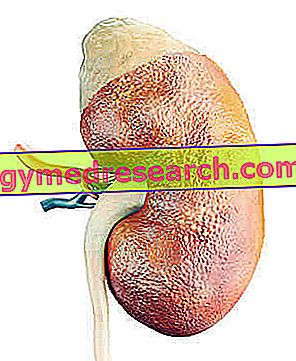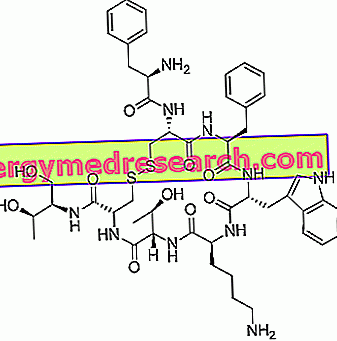Introduction
Schisandra chinensis, also known as Schizandra, is a native oriental shrub, widespread especially in the north-east of China and Korea, but also present in the Russian territory.

Preferring humid environments, the Schizandra grows well on soils rich in humus, where it gives rise to small red fruits, known in Chinese as wu wei zin or "fruit with five flavors". These berries are classically used for food as dried fruit, rather than in the preparation of infusions, tea, wines and other beverages.
Already in ancient traditional Chinese medicine, Schizandra berries were used as efficient adaptogens (thanks to the alleged ability to improve psycho-physical abilities, especially during periods of high stress) and as tonic for excretory organs such as the liver.
In Russia, however, Schizandra berries were mainly used to improve mental performance, in particular concentration, coordination and attention.
Despite the wide uses described in traditional medicine, only in recent years it has been possible to identify the active ingredients present in this plant, characterizing its biological efficacy.
The active ingredients
Several pharmacokinetic studies, together with numerous works of chromatographic and spectrometric characterization, have allowed us to identify only some of the biologically active molecules present in Schizandra.
Most of the biological activities of this plant could be traced back to the presence, in the seeds of its fruits, of over 40 lignans, such as Schizandrin, Deoxychizandrine, Gomosine and Deoxigomisine.
The aforementioned would be added other active ingredients present in the essential oil - such as Borneol, Alpha and beta-pinene, Sesquicarene and Para-cimolo - as well as various molecules of nutritional interest, such as citric and malic acid, vitamin A, vitamin C, vitamin E, stigmasterol, some alkaloids and numerous other antioxidants.
Uses - Scientific Evidence
Today Schizandra is used, especially in Eastern Europe, also in the clinical field.
Well documented are in fact:
- Effects on metabolism and liver health; Schizandra would have been particularly useful both in preventing any histological damage to hepatocytes and in normalizing its activity. From the innumerable data present in the literature, collected on patients subjected to immunosuppressive therapies with hepatotoxic potential and on others affected by hepatitis, Schizandra would have proved invaluable in reducing blood concentrations of transaminases, in increasing the hepatic activity of the antioxidant enzyme Glutathione, in reducing the deleterious effects of hepatotoxins and in preventing the functional and biological degeneration of hepatocytes. These activities are mainly due to lignans.
- The anti-inflammatory effects, observed both on experimental models and in clinical trials. The administration of Schizandra, even for a few days, would have been effective in reducing blood concentrations of inflammatory markers such as the C-reactive protein, inhibiting platelet aggregation and accelerating healing times during inflammatory skin diseases.
- The adaptogenic effects, highly sought after in sports, because they are effective in improving and increasing effort capacity, sustainable duration of effort, reaction times, concentration skills and in facilitating recovery times. At the same time, the important immunomodulatory activity would be invaluable in supporting the normal function of the immune system, especially in periods of high psychophysical stress, thus reducing the risk of overtraining, which is widespread among athletes.
- The antioxidant effects, which are valuable in protecting cells from the damaging action of reactive oxygen species. These activities, in addition to an important cardiovascular protective effect, would seem valuable in the course of retinal oxidative pathologies, autoimmune based pathologies, neurodegenerative pathologies and in cellular aging.
For this reason, Schizandra is now used successfully in healty aging and in general in antiaging medicine.
- The neuroprotective effects, observed especially in experimental models, which would see Schizandra actively involved in protecting against neuronal damage as well as in improving certain disorders, such as depression and anxiety.
Other activities would also be added to the aforementioned activities, but not yet fully characterized and therefore not covered in this article.
Method of use
The dosages of Schizandra, currently proposed, depend strongly on the methods of recruitment as well as on the title in Lignani and in particular in Schizandrin.
In addition to tea, liquid extracts and juices, numerous supplements in capsules or syrup are now available on the market.
In these cases, especially for the adaptogenic purposes, it is generally recommended to take 500 - 2000 mg of Schizandra extract per day.
The dosages used in the clinical setting, for example during liver diseases, are different.
Side effects and contraindications
The American Herbal Product Association classifies the Schizandra among the plants belonging to the first category, that is, among the plants that can be safely consumed if used appropriately.
However, from a careful examination of the literature, following the use of Schizandra, possible side effects would emerge, especially of a gastroenteric nature, such as heartburn, dyspepsia, diarrhea, loss of appetite and nausea.
More rarely, fortunately, is the incidence of noteworthy side effects, such as hypoglycemia, bleeding, headaches and allergic reactions.
The use of this plant would also be strongly contraindicated during pregnancy (due to the increased incidence of fetal malformations observed in experimental models) and in the course of pharmacological therapies (given the ability of the active ingredients contained in it to alter the normal activity of enzymes cytochromials CYP3A4 and CYP1A2, directly involved in the metabolism of numerous drugs).
Bibliography
The Lignan-containing Extract of Schisandra chinensis Berries Inhibits the Growth of Chlamydia pneumonia.
Hakala E, Hanski LL, Yrjönen T, Vuorela HJ, Vuorela PM.
Nat Prod Commun. 2015 Jun; 10 (6): 1001-4
Schisandra chinensis fruit modulates the gut microbiota composition in association with metabolic markers in obese women: a randomized, double-blind placebo-controlled study.
Song MY, Wang JH, Eom T, Kim H.
Nutr Res. 2015 Aug; 35 (8): 655-63.
Determination of lignans in Schisandra chinensis using micellar electrokinetic capillary chromatography.
Sterbová H, Sevcíková P, Kvasnicková L, Glatz Z, Slanina J.
Electrophoresis. 2002 Jan; 23 (2): 253-8
Identification and characterization of potent CYP3A4 inhibitors in Schisandra fruit extract.
Iwata H, Tezuka Y, Kadota S, Hiratsuka A, Watabe T.
Drug Metab Dispos. 2004 Dec; 32 (12): 1351-8
New lignans and cytotoxic constituents from Schisandrapropinqua.
Xu LJ, Huang F, Chen SB, Zhang QX, Li LN, Chen SL, Xiao PG.
Planta Med. 2006 Feb; 72 (2): 169-74
Panax ginseng, Rhodiola rosea and Schisandra chinensis.
Chan SW.
Int J Food Sci Nutr. 2012 Mar; 63 Suppl 1: 75-81. doi: 10.3109 / 09637486.2011.627840.
Improvement of liver function in humans using a mixture of schisandra fruit extract and sesamin.
Chiu HF, Chen TY, Tzeng YT, Wang CK.
Phytother Res. 2013 Mar; 27 (3): 368-73
Phytochemical investigation of sesquiterpenes from the fruits of Schisandra chinensis and their cytotoxic activity.
Venkanna A, Siva B, Poornima B, Vadaparthi PR, Prasad KR, Reddy KA, Reddy GB, Babu KS.
Phytotherapy. 2014 Jun; 95: 102-8.



